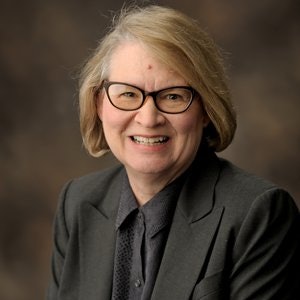More community colleges in the U.S. are beginning to offer bachelor's degrees in addition to their usual offerings, and many of them serve minority populations, according to a recent report from The Community College Baccalaureate Association (CCBA) and higher ed consulting firm Bragg & Associates Inc. Dr. Debra Bragg
Dr. Debra Bragg
According to the report, a CCB college is defined as a school that presently or historically confers mostly sub-baccalaureate degrees – such as associate degrees – and confers less than 50% of their total degrees at the baccalaureate level. The report also looks at only publicly funded and regionally accredited community colleges.
As of last December, there are 187 community colleges that meet the requirements of being a CCB college in the nation.
West Virginia was the first state to have one in 1989. By the 2010s, several more states – including California, Michigan, Florida, Texas, and Georgia – had authorized varying numbers of their colleges to confer bachelor's degrees as well.
In the case of Florida, all 28 of the colleges in its system began conferring bachelor's degrees as of 2021, according to the report. Delaware and Nevada join Florida in this full-scale adoption of CCB degrees.
The number of CCB colleges has seen significant growth, even compared to just two years ago in Fall 2021. Back then, there were 132, but now, there has been a 32% increase in how many community colleges confer, or are authorized to confer, bachelor’s degrees.
This means that, out of the 932 community colleges in the nation, a fifth of them are CCB colleges, the report noted.
This increase in the number of CCB colleges marks a “big jump” over the last two years, said report author Dr. Debra Bragg, president of Bragg & Associates Inc., adding that she expects “tremendous growth” in the next few years.
The number of CCB degree programs at these colleges also rose from 583 to 678, a 17% bump.
Most CCB colleges (62%) are located on the West Coast, a statistic that the report’s authors associate with the distance from and access to institutions of higher ed. On the West Coast, there is “less density” of higher ed and longer commutes, the report notes.
“Geographic access to college, measured through proximal distance from a student’s home to college, correlates with students deciding whether they will ever participate in higher education,” the report read. “Research on … 'education deserts' shows most students choose to attend college within 50 miles of their home.”
CCB colleges also tend to be located in large city and suburban areas (36%) or rural and town settings (27%) rather than in small city and suburban (20%) or midsize city and suburban ones (17%).
Washington, California, and Florida have the most CCB colleges, with 32, 29, and 28, respectively. Though, given the vast number of schools in California, the report still designates the state as one where only 25% to 49% of its community colleges are CCB colleges.
Approximately half of all CCB colleges also count as minority-serving institutions (MSIs), while the other half was made up of predominantly white institutions (PWIs), according to the report. And of those MSIs, Hispanic-Serving Institutions (HSIs) comprise the vast majority (71%).
Among graduates of CCB colleges from 2021-22, about half of them are from racially minoritized groups, the report noted. Students identifying as Hispanic or Latinx made up the slight majority (52%), followed by those identifying as Black or African American (29%) or Asian (9%).
Most (64%) CCB graduates were also women, the report noted. Citing research from the Georgetown University Center for Education and the Workforce, the report authors pointed out that higher representation of women among CCB graduates is consistent with observed higher levels of degree attainment among women than men in higher ed generally.
Though the largest portions of CCB graduates who are men and women pursued and earned their degrees in the field of business – around 40% of graduates of both genders – the genders differed in which other fields they chose. More of the men (34%) pursued CCB degrees in STEM, while more of the women (26%) opted for nursing.
Most of the CCB degree-offering programs in general are in business, followed by health professions, education, and nursing as other prominent contenders.
The purpose of these offering and conferring these workforce-focused CCB degrees is to help support non-traditional and underserved students, said CCBA President Dr. Angela Kersenbrock.
“To me, this is the community college really embracing its missions,” said Kersenbrock. “I know some folks say this is community colleges stepping over their mission. But I think it’s a full embracing of what they should be doing, … closing equity gaps, being the people’s college, setting people up for economic success and mobility, [and] being very responsive to what a community needs in terms of [workers and employees].”





















